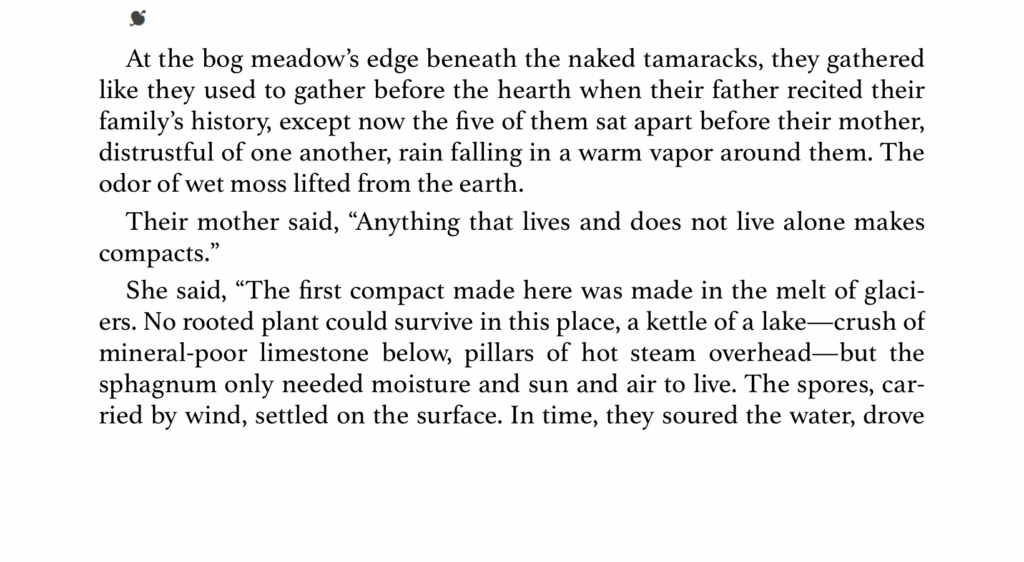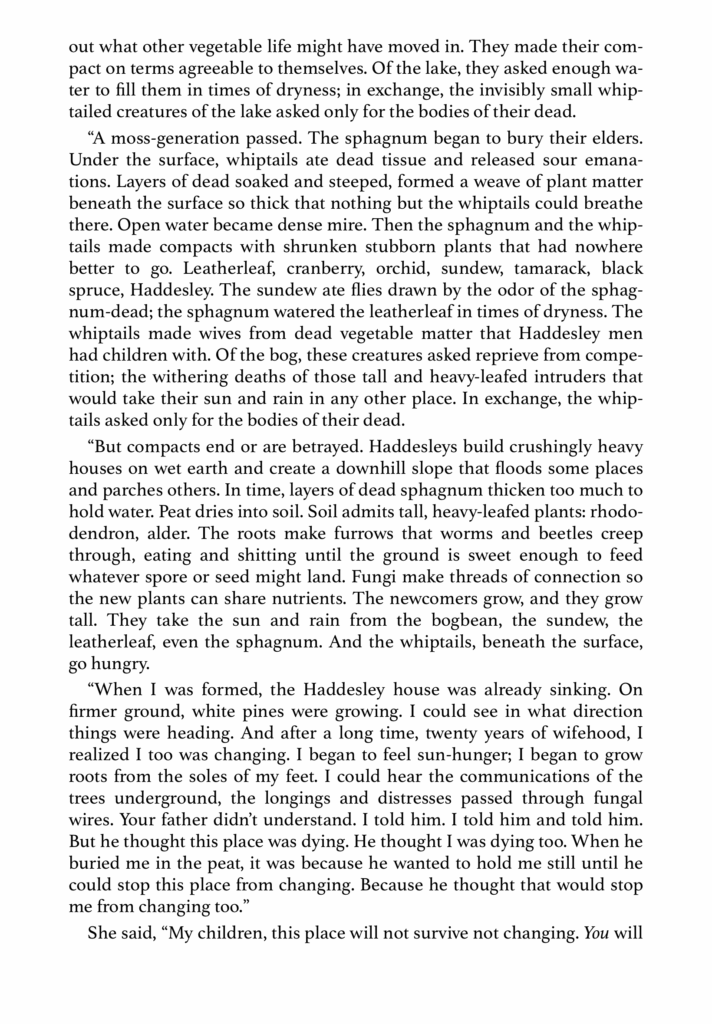2 miles
2 trails
69 degrees
It was nice and I felt good, so I decided to go for a short run this morning. Hot! I wore my summer attire: tank top and shorts. Sunny. Sharp shadows, still air, not much shade. Ran right by the Minnehaha Academy playground and heard all of the kids shouting and shoving and having fun. I peeked at the river through the trees: a flat blue. No turkeys or roller skiers or gushing water. No headphones either. Instead, I listened to the kids and the cars and the loud rumbling of a truck. Also heard: someone’s workout program on their phone, you have complete 3 miles — or something similar to that.
before the run
This morning, I’m reading another chapter of RWK’s Gathering Moss: The Advantages of Being Small: Life in the Boundary Layer. I was excited/please/inspired to encounter this passage:
Mosses inhabit surfaces: the surfaces of rocks, the bark of trees, the surface of a log, that small space where earth and atmosphere first make contact. This meeting ground between air and land is known as the boundary layer. Lying cheek to cheek with rocks and logs, mosses are intimate with the contours and textures of their substrate.
Gathering Moss/ Robin Wall Kimmerer
surfaces / where earth and atmosphere meet / boundary layer / intimate / contours / textures
I’m interested in surfaces, both ground surfaces by the gorge and water surfaces at the lake. I’ve gathered poems and thought about them before. And there is a line from my Haunts project that I’m still trying to write around/beside/through: It begins here: from the ground up, feet first, following. Today, I want to think about surfaces and boundary layers and textures and the intimacy that is created when air and land, foot and ground, meet.
things we did on grass
When you lie on the ground on a sunny summer afternoon to look up and watch the clouds go by, you place yourself in the boundary of the earth’s surface. When you are flat on the ground, the wind speed is reduced, you can scarcely feel the breeze that would ruffle your hair if you were standing up.
Things we did on grass is a line from an XTC song. I’ve been wanting to experiment with it. RWK is inspiring me!
still
the air becomes progressively slower and slower until, immediately adjacent to the surface, the air is perfectly still, captured by the friction with the surface itself. It is this layer of still air that you experience while lying on the ground.
Such a rich word and idea, still. I’ve been orbiting around it for years. And yet, the opposite of restlessness, something I can’t do: sit still, a calmness and willingness to stop and just be.
during the run
Since I’m thinking of surfaces, especially grass, I decided to run on the grassy boulevard between edmund and the river road. After the run, as I was walking home, I recorded some thoughts:
[transcript] may 6th. I’m thinking about surfaces and moss and where air and ground meet and these little spaces that are sheltered, that are a little warmer and still and allow for friction without total erosion. Then I was thinking about how I like those spaces — those small spaces, those enough spaces. Then RWK’s bit at the end of the chapter, about how moss still need to germinate and seed and they can’t in these sheltered spaces so they have to expose themselves. Also thinking about the back deck as a sheltered space. It’s interesting to put this in a context of the pandemic because of how the surfaces and how this dirt trail is surely wider because people were running and walking and using it during the pandemic. All the different ways that (the pandemic) is written on this surface, this boundary layer.
surfaces: asphalt, concrete, grass, roots, packed dirt, soft dirt, mulching leaves, rubbled asphalt, limestone
Earlier in the run, I was also thinking about friction in relation to surfaces meeting. In particular, my feet and the ground, but also RWK’s example of free flowing air being disrupted and altered by rock. My thought: we need that friction to feel bodies, to feel our bodies. A flash of Wittgenstein and his rough ground (as opposed to smooth ice) flashed through my head.
I thought about the benefits of being small and a discussion I had with FWA the other day when he was suggesting that humans are resilient in the way that small trees that can bend and lean with the wind during a heavy storm are.
after the run
Ideas to give some attention:
- Intimacy and Forrest Gander and Anne Pringles’ conversation about intimacy as an encounter that transforms you and Scott describing two trees growing out of the same spot and intertwining as intimate
- the texture of wind when encountering objects, makes me think of light on surfaces and how the ancient greeks took that into account in their understandings of, and names for, color
- surfaces and feet first, following — the encounter between foot and ground is the space where a poem can be written and offered
- the boundary layer visible to our eye as the horizontal lines I mentioned last month: the line between blue and brown
- where earth and atmosphere meet = violet
- grass as threshold (a boundary space): the threshold between neighborhood and park, between life and death — grass as a space where the dead and living can meet
- the dirt trail through the grass as a record of the pandemic
- not too deep, at the surface: humus, loam

